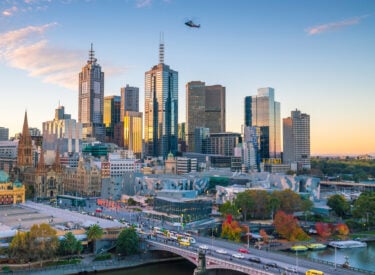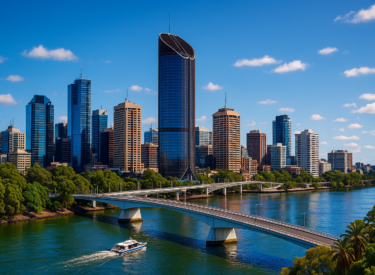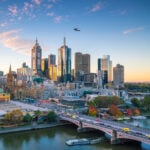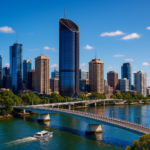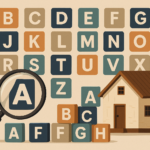
Key takeaways
Migration reflects human ambition, courage, and hope, not merely bureaucracy or border policy.
As Simon Kuestenmacher said: “Migration is the best indicator of human freedom.” It signals where people feel free to pursue better lives.
People migrate proactively in search of more opportunity, not just to escape hardship.
Every time the migration debate flares up in Australia, the focus seems to land on rental shortages, infrastructure pressures, and overburdened services.
But if that’s all you’re seeing, you’re missing the bigger picture.
Because migration isn’t just about borders or bureaucracy, it’s fundamentally about human freedom.
People don’t uproot their lives lightly.
Migration is a profound expression of ambition, courage, and hope.
It’s a global indicator of where freedom exists—and where it doesn’t.
Demographer Simon Kuestenmacher put it well in our Demographics Decoded podcast when he said: “Migration is the best indicator of human freedom.”
It’s not just about fleeing danger or chasing jobs, it’s about agency. About people choosing to build a better life for themselves and their children.
Let’s see what this means, because understanding the why behind migration is critical for those of us trying to make sense of the Australia we’re becoming.
For weekly insights and strategic advice, subscribe to the Demographics Decoded podcast, where we will continue to explore these trends and their implications in greater detail.
Subscribe now on your favourite Podcast player:
The myth of the “reluctant migrant”
Too often, migration is viewed as a crisis response: people fleeing war, famine, or political oppression.
And yes, those stories exist, just look at Syria or Ukraine.
But the majority of global migration isn’t reactive; it’s proactive.
People move because they want more.
More opportunity. More safety. More freedom.
And that makes migration a barometer of where people believe those things exist.
In fact, only 4% of the world’s population lives outside the country where they were born.
That’s a tiny fraction.
The vast majority of people stay put, not because they’re trapped, but because they feel a sense of connection to where they live.
As Simon put it, “Most people would rather stay home. They only move when they think their future is shrinking.”

Note: Migration is an act of belief. Belief that the future can be better.
The two types of freedom: “to” and “from”
Here’s where the conversation gets deeper.
We often assume freedom means the absence of war or authoritarianism, freedom from danger.
But there’s another, often overlooked concept: freedom to act, to move, to choose.
Australia offers both.
We have the freedom to leave and explore, and we’re free from much of the hardship that drives people away from other countries.
But freedom is also tied to economics, and that’s where things get complicated.
Simon put it bluntly: “Money is a freedom-making machine.”
And he’s right.
A young person priced out of housing isn’t as free as they should be.
If moving out of home or relocating for work is financially unviable, that’s not real freedom.
It’s economic paralysis.
And this is where housing policy and migration intersect.
Migration and housing: misplaced blame
There’s a persistent narrative in the media that blames migrants for the housing shortage.
But let’s be honest, it’s not the people who are the problem, it’s the planning.
Around half of our migrants come here as international students - young, single, and living in high-density student accommodation or shared houses.
They’re not bidding up house prices in the outer suburbs.
The other large cohort consists of young, skilled workers, who are generally single or partnered without children.
They cluster near job centers, universities, and transport nodes, because that’s where the jobs are.
What does that mean for housing markets?
It means migration largely pressures the inner-urban rental market, rather than detached family homes in the middle ring and outer suburbs.
Yes, this creates demand, but it’s targeted, not systemic.
If anything, the real issue is that we haven't adequately increased supply where it’s needed.
We’re not building enough student accommodation, transit-oriented developments, or affordable urban infill.
Instead, we’re stuck fighting the wrong battle, blaming migrants for poor infrastructure planning.
Simon was clear: “It’s not a migration problem, it’s a housing and infrastructure problem.”
And he's absolutely right.
The global migration picture: what the data really tells us
To fully understand Australia’s place in this story, we need to zoom out.
The U.S. remains the number one migrant destination globally, with over 50 million foreign-born residents.
That’s no surprise; it’s the richest, most culturally dominant nation in the world.
What might surprise some, however, is that Germany is now number two, with over 17 million migrants, many of them recent arrivals from Ukraine.
Saudi Arabia comes in third, a reflection not of freedom, but of economic pull.
It’s a work migration story, not a human rights one.
Australia, meanwhile, ranks ninth globally.
But here’s the clincher: while other countries have more migrants in absolute terms, Australia has one of the highest proportions of foreign-born residents in the world, around 30%.
That makes us one of the most multicultural nations on the planet.
And yet, as Simon joked, “We don’t have enough problems to show for it.”
Because the reality is that Australia integrates migrants exceptionally well, especially over the long term.

Source: The New Daily
The long game: from outsiders to “true blue” Aussies
Australia’s migration success isn’t measured in year one.
It’s measured in generation #2.
Yes, the first wave of migrants may struggle with language barriers, cultural shock, and discrimination.
But just look at the second-generation Vietnamese Australians, or the children of Greek and Italian migrants from the post-war era.
Today, they’re indistinguishably Australian.
Integration happens, not always immediately, but deeply and lastingly.
Simon pointed out that while older migrants may never fully integrate, he mentions Greek widows who still barely speak English, that’s not the whole story.
Their children thrive.
And that’s what matters.
That’s what builds social capital and intergenerational progress.
This is the slow, steady, sometimes messy but ultimately successful story of a migration nation.
The real opportunity migration offers Australia
Let’s not forget: migration is a growth strategy.
Migrants skew younger, more educated, and more economically active.
They grow the tax base, boost demand, fill workforce gaps, and enrich our society.
We get to choose who we let in.
And we’re lucky enough to be a destination that people choose.
That's not just fortunate, that’s strategic gold.
As the world ages and fertility rates fall, many developed countries are fighting for talent.
Australia is in a privileged position.
Our challenge isn’t numbers, it’s coordination.
We need to align housing policy, infrastructure investment, education capacity, and workforce planning.
Because if we get that right, migration isn’t a threat.
It’s a tailwind.
Final Thoughts
It’s time to reframe the migration debate in Australia.
Not as a zero-sum game. Not as a threat.
But as a national strength that, if managed wisely, secures our future prosperity.
Migration is the story of people backing themselves, and backing us.
It’s the story of human courage, resilience, and yes, freedom.
As Simon said, the global numbers don’t lie.
Migration isn’t exploding; it’s steady and predictable.
But what we choose to do with that opportunity?
That’s entirely up to us.
Let’s be the kind of country that lives up to the promise migrants see when they choose Australia.
If you found this discussion helpful, don't forget to subscribe to our podcast and share it with others who might benefit.
Subscribe now on your favourite Podcast player:




